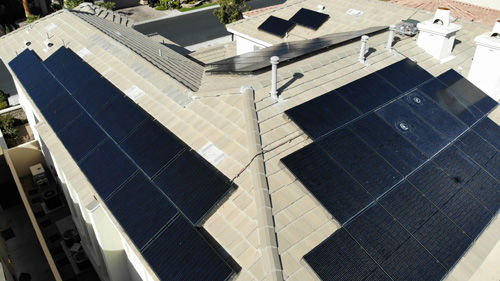
The Definition of Photovoltaic in Solar Panels
Welcome to Nevada Solar Group, your trusted source for solar panel installation and services related to solar energy. In this article, we will explore the definition of photovoltaic in the context of solar panels. Our goal is to provide you with a comprehensive understanding of how solar panels work, their components, and their role in generating clean and renewable energy.
What are Solar Panels?
Solar panels are devices that harness the power of sunlight to generate electricity. They are composed of individual solar cells, which are typically made of silicon. These cells absorb photons from the sun’s rays and release electrons, creating an electric current. This process is known as the photovoltaic effect, which is how solar panels convert sunlight into usable energy.
The Role of Solar Cells
Solar cells are the building blocks of solar panels. They are responsible for capturing sunlight and generating an electric current. Each solar cell consists of two layers of semiconductor material, typically silicon. When sunlight hits these layers, it excites the electrons in the material, causing them to flow in a specific direction. This flow of electrons creates an electric current that can be harnessed for various applications.
Converting DC to AC with an Inverter
The electricity generated by solar panels is in the form of direct current (DC), which is different from the alternating current (AC) used in most homes and businesses. To make solar-generated electricity compatible with the existing power grid, an inverter is used to convert DC electricity into AC electricity. The inverter ensures that the electricity produced by the solar panels is suitable for powering household appliances and other electrical devices.
Mounting Options
Solar panels can be installed in two main ways: roof mounting and ground mounting. Roof mounting involves installing the solar panels on the roof of a building, while ground mounting involves placing the panels on the ground. The choice of mounting option depends on factors such as available space, sunlight conditions, and the structural integrity of the building. Nevada Solar Group offers professional installation services to ensure that solar panels are properly positioned and secured.
The Importance of Placement and Orientation
The angle and orientation of solar panels are crucial for maximizing their efficiency and energy production. The best angle for solar panels depends on the latitude of the installation site. In general, panels should be tilted at an angle equal to the latitude minus 15 degrees to maximize energy production throughout the year. Proper orientation, such as facing south in the Northern Hemisphere, also helps optimize energy generation. Nevada Solar Group takes these factors into account during the installation process to ensure that solar panels perform at their best.
Shading Analysis and Sun Path Analysis
To optimize the performance of solar panels, shading analysis and sun path analysis are conducted. Shading analysis assesses the amount of shade that could potentially affect solar panel performance. By identifying potential shading issues, proper placement can be determined to ensure maximum sunlight exposure. Sun path analysis, on the other hand, determines the path of the sun throughout the day and year. This information helps optimize the angle and orientation of the panels to capture the most sunlight possible.
Net Metering: Taking Advantage of Excess Electricity
One of the key benefits of installing solar panels is the ability to take advantage of net metering. Net metering is a policy that allows solar panel owners to receive credits for the excess electricity they generate. When a solar panel system produces more electricity than is needed, the excess is sent back to the grid. This excess electricity is then credited to the owner’s utility account. These credits can be used to offset future electricity costs when the solar system is not producing enough power, such as during nighttime or cloudy days.
By participating in net metering, solar panel owners can effectively reduce their energy bills and contribute to a more sustainable energy future. Nevada Solar Group can assist you in understanding the net metering policy in your region and help you make the most of your solar panel system.
Conclusion
In conclusion, solar panels are devices that convert sunlight into electricity through the use of solar cells made of silicon. Nevada Solar Group specializes in solar panel installation and offers services related to solar energy. We understand the importance of proper placement and orientation to maximize the efficiency of solar panels. Our team can conduct shading analysis and sun path analysis to optimize your solar panel system. Additionally, our experts can guide you through the net metering process to take advantage of excess electricity. Trust Nevada Solar Group to provide you with the knowledge and services you need to make informed decisions about solar panel installation.